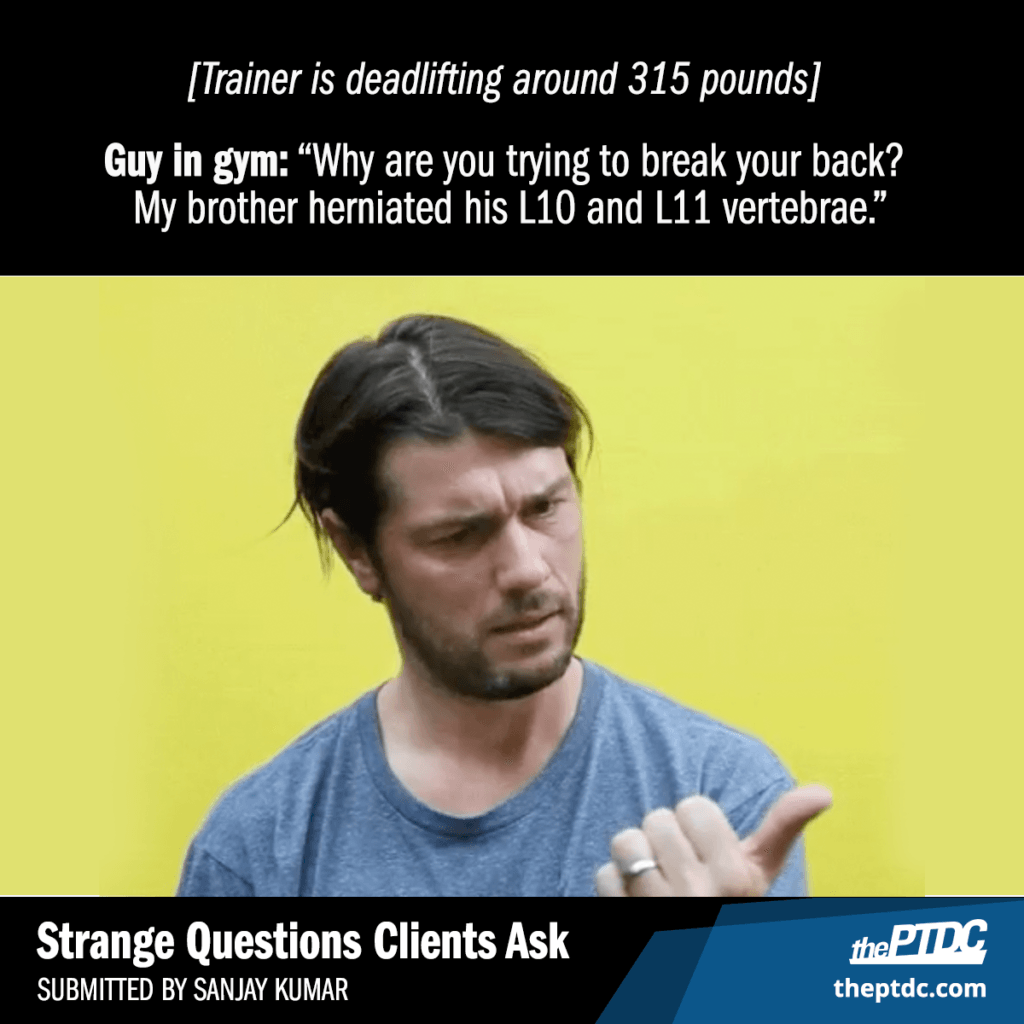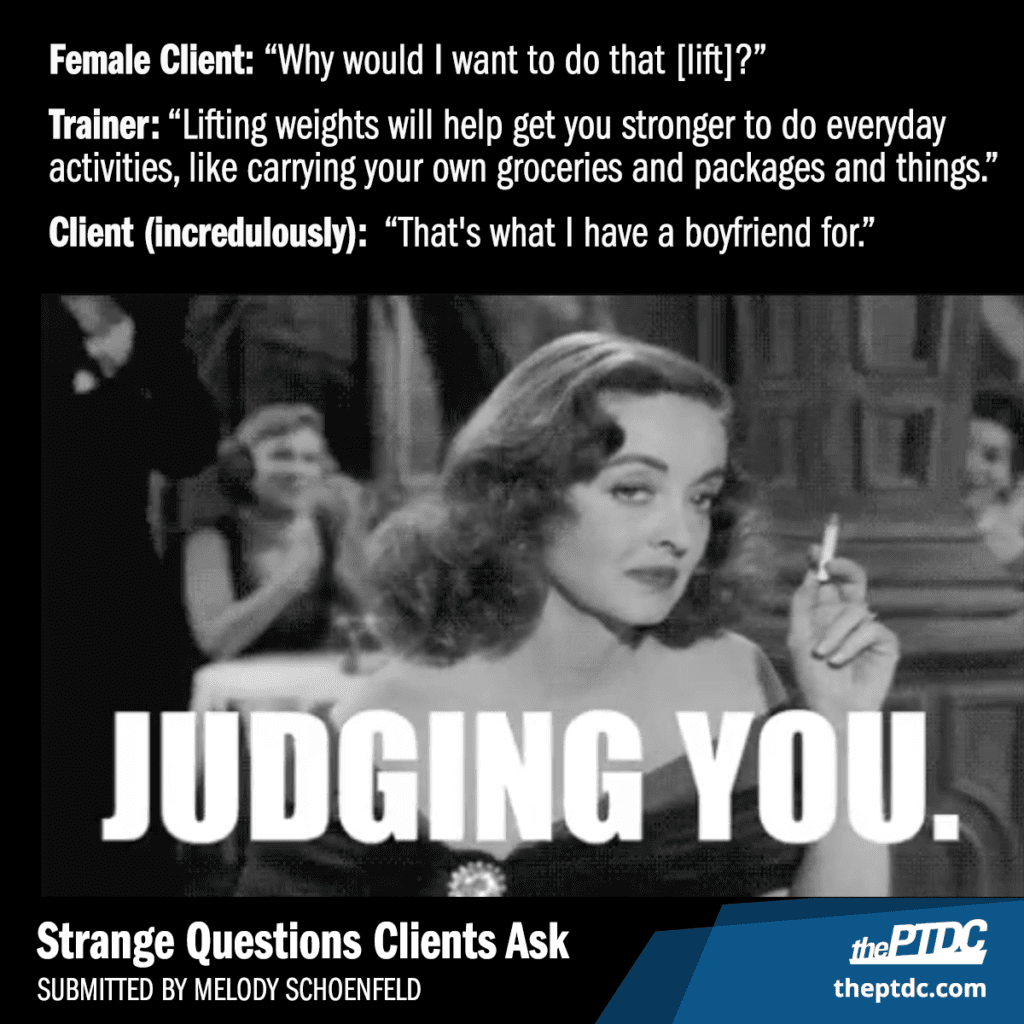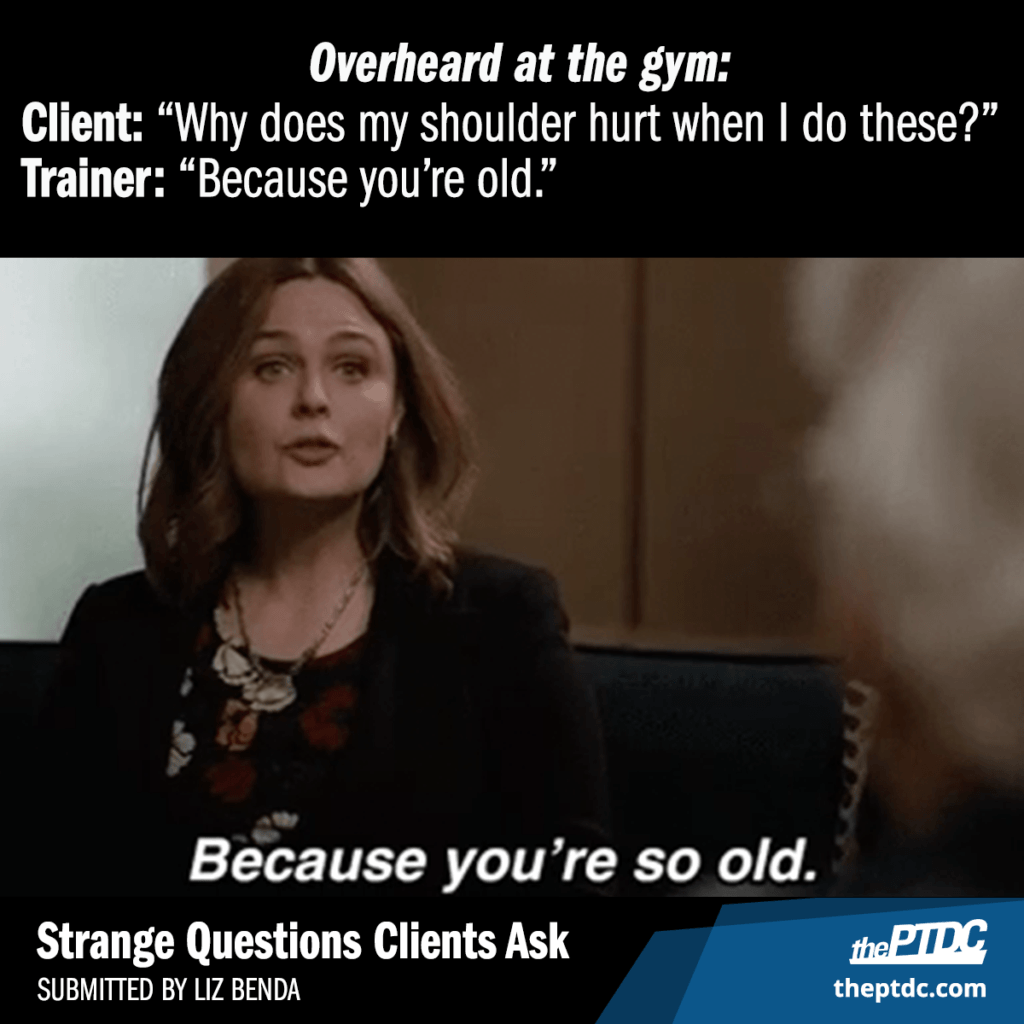Editor’s note:
This story started with Quora.
Specifically, it began with my search through some of the unanswered questions the site had queued up for me. I found them depressing, and I went off on them during an episode of The FitCast with my friend Kevin Larrabee. (My rant starts around the 34-minute mark.)
We recorded the interview before I started working for the PTDC as editorial director. But those misguided questions were still on my mind when I put this story in motion by asking trainers to share the craziest questions and comments they’ve heard.
I got some great responses, which you’ll see below. But to my surprise, I also got an insightful essay from Geoff Girvitz, owner of Bang Fitness in Toronto. By pure coincidence, he too was motivated by a question on Quora.
--Lou Schuler
This is the question Quora asked me to answer:
“Will drinking lemon juice every morning reduce belly fat?”
Is it a stupid question? We’ll get to that in a moment.
More important is the fact we hear so many questions just like it, as does anyone who looks strong or seems to know something about exercise or nutrition. How we answer these questions matters, for these reasons:
- Someone trusts and respects you enough to ask in the first place. That means something.
- As Dave Tate points out in this talk, they’re choosing you over Google. It’s an honor.
- A question is more than a question. It’s insight. Once you know how someone thinks about the subject of the question, you can help to elevate that person’s thought process. You can help her ask better questions, and with better questions come more accurate answers.
Questions like the one about lemon juice have a common theme: How can I get maximum results with minimum effort?
And that’s a great question. It would be stupid not to ask it. When someone does, it deserves more than a flip response. Here’s how.
Step 1: Get Experimental
Consider this as your initial response:
“I don’t know, but it sounds like an interesting experiment.”
You’ve reframed the query as a process. It’s no longer yes-or-no; it’s a learning opportunity. More important, you’ve shifted the responsibility from the expert to the end user. It’s up to her to figure it out.
John Berardi, PhD, recommends a slightly different approach. In an interview on The FitCast, the co-founder of Precision Nutrition suggests asking why the client finds the advice compelling. “Now you’re going to seek some understanding,” he says. “Maybe you can give the same thing to them in a better way.”
Either approach leads to this follow-up question: “How will you decide if it works?”
This inspires a cascade of related questions. What will you measure? How will you measure it, and how often? When will you start and finish? How will you control potentially confounding variables?
You don’t want to pile on with all the nuances of the scientific method, but you do want to get her to think about how she could find an answer—or to acknowledge that the answer she finds isn’t likely to be compelling
Step 2: Get Real
If the person is ready to move on from the original question—how do I get something for nothing?—this is the next question to ask:
“When you’ve seen physical change before, what were you doing?”
It’s natural to not want to feel uncomfortable. But she probably knows, just as you know, that change requires exactly that. That’s human physiology, for better or worse.
There’s a silver lining to acknowledging the obvious: When someone searches for clues in the past, she not only gets a realistic sense of what success may look or feel like, she remembers that she has succeeded in the past. Which suggests she can do it again.
Step 3: Get Involved
Once you’ve planted that thought, it’s time to show you care about the outcome:
“I’m curious to hear what happens. You’ll let me know, right?”
If you want to help people, this is where you start. Knowledge is cheap these days. Caring is precious. And if the person isn’t already a client, this may be the moment when he decides he wants to be one.
Whether he does or doesn’t hire you, I hope my biggest point is clear: Any question that opens the door to both knowledge and potential income is a great question.
No matter how stupid it seems at first.
Submitted for Your Amusement: The Craziest Questions We Heard
The following questions and comments were shared with us on Facebook (follow us here), and have been slightly edited for brevity, grammar, and the fact editors can’t resist editing.
PART 1: TRAINING


Since there are only five lumbar vertebrae, L1 through L5, Sanjay guessed that L10 and L11 would be somewhere between the hip and knee.


To fully appreciate how funny this question is, it helps to visualize Schultz, who’s in the first photo at this link. He’s the guy with the sledgehammer.


Dean suggested he take that up with his oncologist.
PART 2: NUTRITION




Roland said no, and explained why. “But I wish I’d said, 'Yes, of course. Ever see a giraffe eat meat? They're pure vegan, and look at how long and lean they are.'"

When Adam explained how unlikely it was, she said she'd find someone who would tell her yes.
PART 3: AND THE AWARD FOR WORST ANSWER FROM A TRAINER GOES TO …










